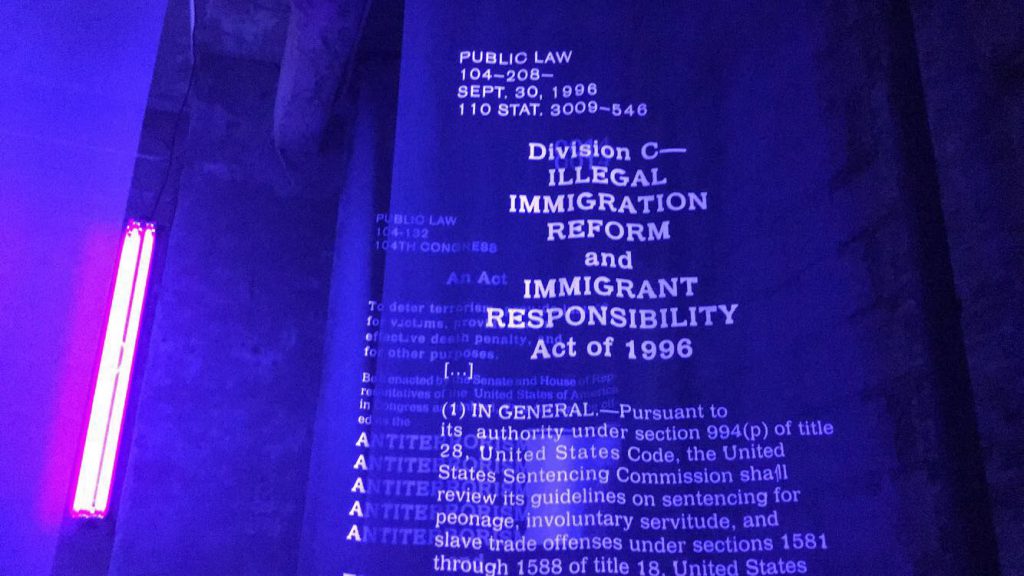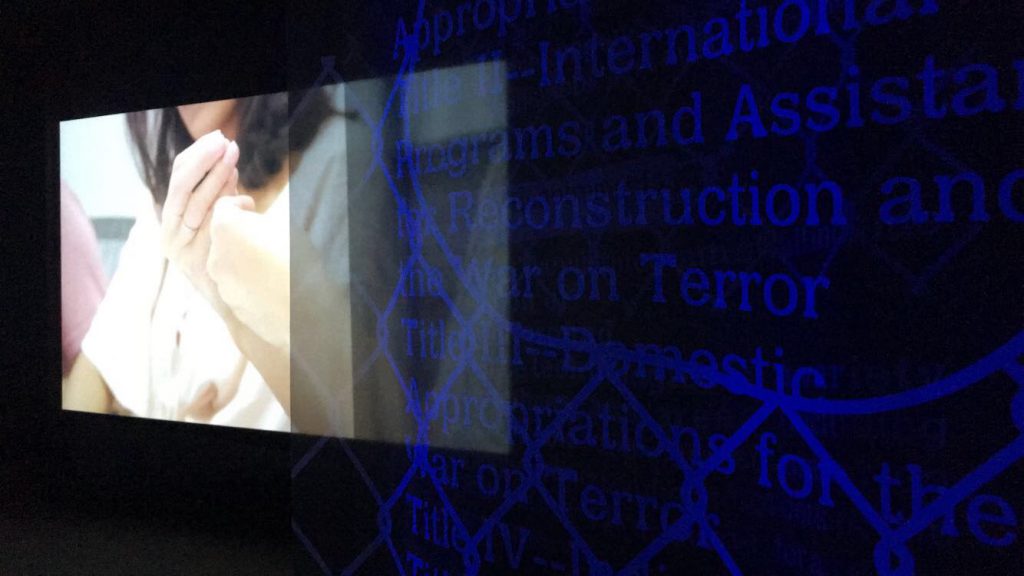I saw an exhibition called Chiron by an Italian artist Adelita Husni-Bey at New Museum on April 25th. The origin of the title comes from the Greek mythological figure Chiron which evokes the notion of the wounded healer. She addresses themes such as migration and displacement. The exhibition is located at the very end of South Galleries on the first floor separated from other work by a hallway and doubled black curtains. It created an interesting feeling in myself, feeling of not knowing what’s on the other side and of finding out what’s behind the curtains. Among the three short films exhibited, I liked the one that touches on immigration reform in the United States.

The film starts with a group of young women and men, who address themselves as lawyers, discussing laws whether they are tools of the law or the law is a tool for them. The footage includes close-ups of their hands and faces and uses techniques of pulling focus and taking one shots. Its soft focus and how it adjust the focus on the subjects create a feeling the camera is floating around the room not in an intimidating or surveilling way. Gaze of the lawyers is shared among them and does not directly address the existence of the camera. Two long shots reveal that the lawyers are in a typical-looking conference room and in an office. I thought heavily relying on the close-ups and using blue lights were very productive and creative ways of shooting the space since the conference room and office has almost nothing that’s visually pleasing to look at. What’s interesting is the subjects themselves and what they are talking about. B-rolls include observational footage of the abandoned houses, the lawyers pretending like they are typing something on a computer whose screen is turned off, and experimental/performative exercise. The computer footage, I think, is a symbol of them resisting to the system but not getting any feedback as they mention how the system(the law) in the United States does not support immigration and undocumented people and they face frustration of not being able to use the law to help and protect those people. Even though I know a little about theatrical exercise and technique which cultivate body-to-body relationships and break the physical and mental barriers among people, I was not quite sure what the participants are engaging themselves into for what purpose.

In a book called the World of Creativity(Sozo no Sekai), a Japanese writer Ayako Sono talks about how artists don’t have to explain anything further than the work itself as it should tell just sufficient amount of information the audience needs. I have learned that in visual/experimental production, we don’t necessarily explain everything. However, reading the exhibit’s explanation really contextualized what I just watched. I learned that the film features members of an non-profit organization UnLocal that provides free legal representation to undocumented immigrants in New York City. Husni-Bey conducted a series of workshops there throughout last fall to address oppression, emotional depletion, and the psychological consequences of immigration enforcement. The participants of Husni-Bey’s workshop use theater and creative writing as means to de-individualize pain and to understand its political ramification.
If I didn’t see the explanation board which I red after watching the piece, how much story and information I could get out from the artifice itself? The film is truly significant and experimental as it does not employ a conventional interview style, but it is still crucial to consider what details a filmmaker includes and omits in her/his work to effectively tell a story while maintaining aesthetic visual presentations.